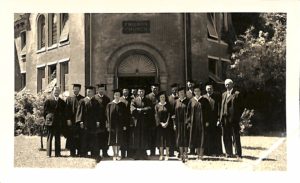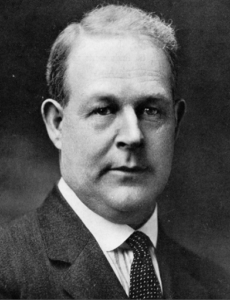
Levi Pennington became the college’s new president in 1911. He believed the college “could assist young people to develop in such a way that their contribution would add significant moral, spiritual, and intellectual ingredients to national life.” To accomplish this and to obtain national accreditation, the college needed a strong financial foundation and quality academic standards and facilities. Therefore, the board decided to create a $100,000 endowment (equivalent to over $2.5 million in 2018). Oregon Friends could not raise all the necessary funds, so for three years, Pennington traveled extensively asking Quaker congregations to donate to the college. With the support of Quakers from across the country, the initial endowment goal was met.
While this was a worthwhile first step, Pacific continued to struggle to meet the standards for accreditation. In 1912, The National Educational Association and the United States Bureau of Education Standards required accredited colleges to have an endowment of $200,000 (equivalent to over $5 million in 2018). Accreditation also would require the college to have a larger library collection and upgraded science labs. As the college had only 47 students in 1915, the future appeared uncertain.
Pacific was the only college in Oregon that continued to offer German language classes during the war.
The United States entry into World War I in 1917 raised new challenges. As a Friends institution, the school held the position that Christians should not participate in the war. While some students did join the military, a majority were conscientious objectors. Eventually over half the student body participated in war relief efforts in France, Belgium, and Germany through the American Friends Service Committee.
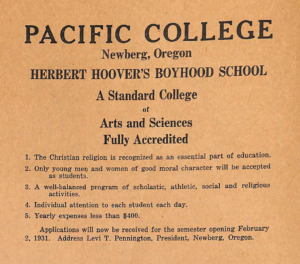
By the early 1920s, in order to attract more students, the college decided to introduce a larger variety of classes, build a new dorm, and improve the science labs. Due to these efforts, the student body grew to 75 in the 1925-26 academic year. Three-quarters of the student body were Quakers. Meanwhile, the decision was made to close Friends Pacific Academy in 1930 due to falling enrollments and competition from Newberg High School.
In 1929, in a small fundraising effort, the college was offered all the prunes the faculty and students could pick in one day. They picked 1,822 boxes, raising $872.50 and earning the nickname “prune pickers” for the athletic teams.
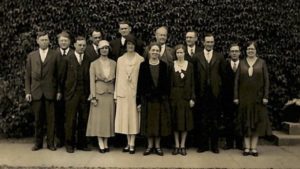
Though the college was able to attract students, the financial difficulties continued through the 30s and early 40s. The college was barely able to pay faculty and staff. In 1932, three faculty members volunteered to resign and the president and the rest of the faculty agreed to donate 10% of their salaries to provide twenty student scholarships. In 1933, the board announced that it could only guarantee 60% of faculty salaries. Little did they know this would remain the case for ten years, and faculty would often receive less than that. In 1939, for example, Levi Pennington’s annual salary was $969 ($17,000 in 2018), while the average faculty salary was $700 ($12,400 in 2018). Despite this, faculty members served an average of 15 years, garnering Pacific College praise from the newspaper, The Portland Spectacle, which described the college as one of “the best 25 percent of colleges throughout the United States.”
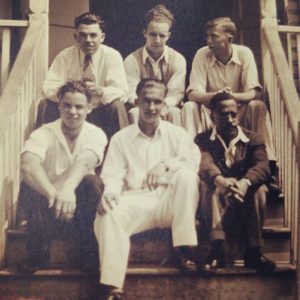
Alan Rutherford was George Fox’s first known African American student. He graduated in 1932 and wrote his senior thesis on lynching in the south. This document is in the university archive.
As the college approached its 50th-anniversary celebrations in 1941, it reached the milestone of the 350th graduate since the founding of the college in 1891. By contrast, the university had 380 undergraduates participate in the Spring 2017 graduation.
